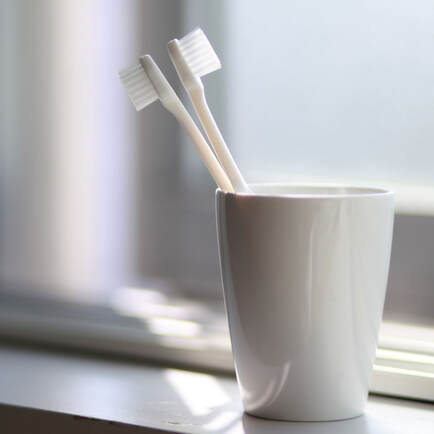Concourse Dental Group
Periodontics
Periodontics
Periodontics is a branch of dentistry that treats gum infection or disease, preventing destruction of the surrounding and supporting structures of the teeth.
what is periodontal disease?
The word periodontal means “around the tooth”. Periodontal disease attacks the gums and the bone that support the teeth.
It all starts with plaque. Plaque is a sticky film of food debris, bacteria, and saliva. Over time plaque turns into calculus (tartar). Plaque and calculus can destroy the gums and bone if they are not removed. That is why it is so important to maintain good dental hygiene with regular cleaning and scaling.
Four out of five people who have periodontal disease are not aware of it. This is because the disease is usually painless in the early stages.
Not only is it the number one reason for tooth loss, research suggests a link between periodontal disease and other diseases such as stroke, diabetes, cardiovascular disease, and increased risks during pregnancy. Smoking also increases the risk of periodontal disease.
It all starts with plaque. Plaque is a sticky film of food debris, bacteria, and saliva. Over time plaque turns into calculus (tartar). Plaque and calculus can destroy the gums and bone if they are not removed. That is why it is so important to maintain good dental hygiene with regular cleaning and scaling.
Four out of five people who have periodontal disease are not aware of it. This is because the disease is usually painless in the early stages.
Not only is it the number one reason for tooth loss, research suggests a link between periodontal disease and other diseases such as stroke, diabetes, cardiovascular disease, and increased risks during pregnancy. Smoking also increases the risk of periodontal disease.
WHAT ARE THE SIGNS AND SYMPTOMS OF PERIODONTAL DISEASE?
- Bleeding gums – Gums should never bleed, even when you brush vigorously or use dental floss
- Loose teeth – Also caused by bone loss or weakened periodontal fibres (fibres that attach the tooth to the bone)
- New spacing between teeth – Caused by bone loss
- Persistent bad breath – Caused by bacteria in the mouth
- Pus around the teeth and gums – A sign that an infection is present
- Receding gums – Loss of gum around a tooth
- Red and puffy gums – Gums should never be red or swollen
- Tenderness or discomfort – Plaque, calculus, and bacteria irritate the gums and teeth
how is periodontal disease diagnosed?
Periodontal disease is diagnosed by your dentist or dental hygienist during a periodontal examination. This type of exam should always be part of your regular dental check-up.
A periodontal probe (a small dental instrument) is gently used to measure the sulcus or space between the tooth and the gums. A healthy sulcus is no more than three millimetres deep and does not bleed. The pockets usually deepen as periodontal disease progresses.
Your dentist or hygienist will use pocket depths, amount of bleeding, inflammation, tooth mobility, etc. to make a diagnosis that will fall into a category below:
A periodontal probe (a small dental instrument) is gently used to measure the sulcus or space between the tooth and the gums. A healthy sulcus is no more than three millimetres deep and does not bleed. The pockets usually deepen as periodontal disease progresses.
Your dentist or hygienist will use pocket depths, amount of bleeding, inflammation, tooth mobility, etc. to make a diagnosis that will fall into a category below:
- Gingivitis: gingivitis is the first stage of periodontal disease. Plaque and its toxic by-products irritate the gums, making them tender, inflamed, and likely to bleed.
- Periodontitis: plaque hardens into calculus (tartar). As calculus and plaque continue to build up, the gums begin to recede from the teeth. Deeper pockets form between the gums and teeth and become filled with bacteria and pus. The gums become very irritated, inflamed, and bleed easily. Slight to moderate bone loss may be present.
- Advanced Periodontitis: the teeth lose more support as the gums, bone, and periodontal ligament continue to be destroyed. Unless treated, the affected teeth will become very loose and may be lost. Generalized moderate to severe bone loss may be present.
HOW CAN I PREVENT PERIODONTAL DISEASE?
Good oral hygiene, a balanced diet, and regular dental cleanings and checkups will help reduce your risk of developing periodontal disease.
What can I do if I have advanced periodontal disease?
Your dentist will refer you to a periodontist (gum specialist). The periodontist will determine if you benefit from further treatment including specialized procedures such as gum surgery or deeper cleaning of the roots of the teeth.
|
Concourse Dental Group Dr. Samira Jaffer 65 Queen Street West Concourse Level, Suite BG1060 Toronto, Ontario M5H 2M5 Phone 416-368-7959 Fax 416-368-5697 [email protected] |
